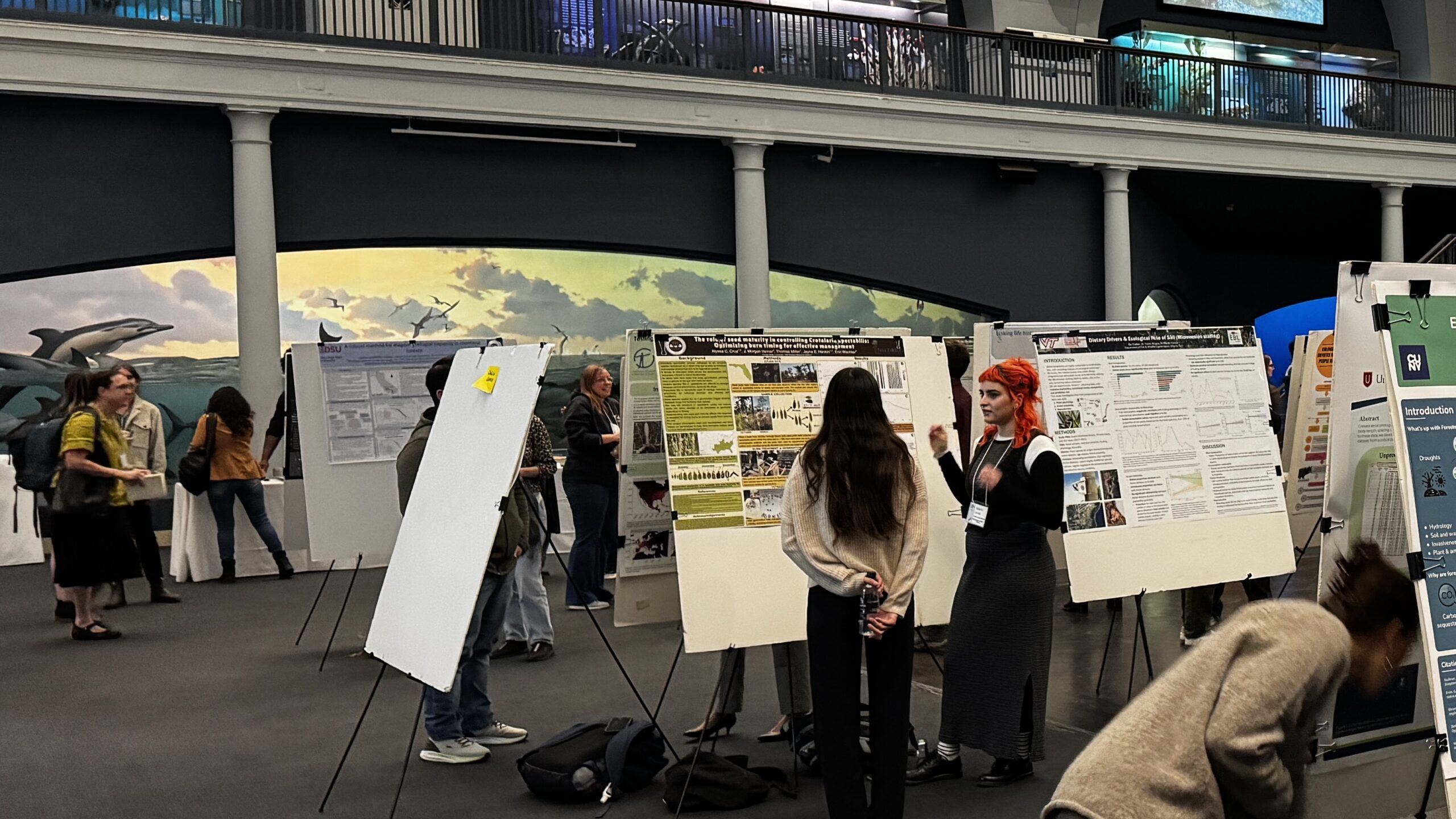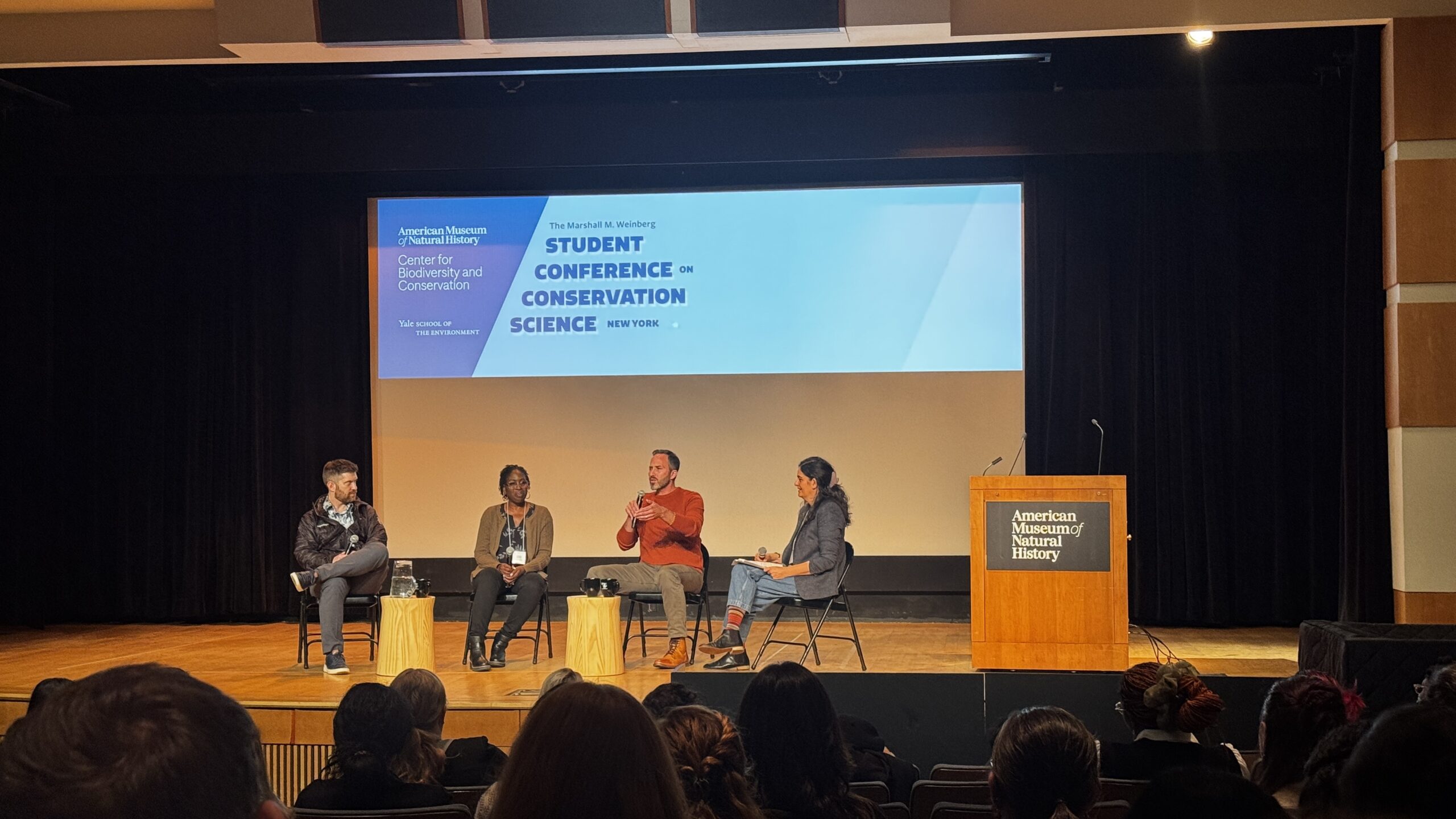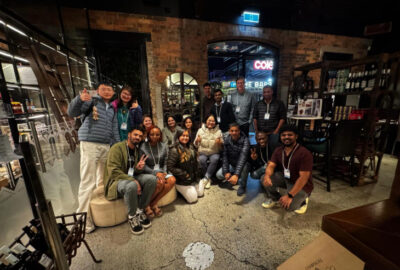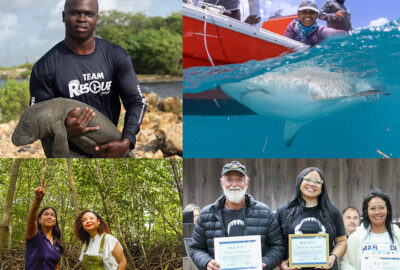New York City and the Inspiration of Conservation
MCAF Fellow Rafid Shidqi reflects on his recent experience at the Student Conference on Conservation Science in New York City.


By Rafid Shidqi
The Marine Conservation Action Fund (MCAF) was honored to help support MCAF Fellow Rafid Shidqi, the co-founder and director of Thresher Shark Indonesia, to attend a recent conference. Here, Rafid shares what he learned and how it’s shaping his organization’s work.
“You were so brave for driving in New York!” said one of my friends once they knew that I had to drive from New Jersey, where I am staying with my family for the conference.
I attended the 16th Student Conference on Conservation Science in New York (SCCS-NY) this year. The conference was organized by the Center for Biodiversity and Conservation at the American Museum of Natural History (AMNH) in New York City. However, I stayed in New Jersey with my wife, Addin, and my little daughter, Rumaisha, for this conference. Why? I tried to find some quieter options because city life is too overwhelming for me.
That aside, I really enjoyed participating at SCCS-NY and met some passionate and brilliant researchers and conservationists sharing their incredible work across the US and around the world.
Alternative livelihood for sharks
My goal at the conference was to share our recently published paper by Oryx, which discusses the outcomes of conservation based on a five-year intervention by Thresher Shark Indonesia. Our work on Alor Island, Indonesia, focused on whether we can achieve conservation for the endangered pelagic thresher sharks without harming the social and economic well-being of fishers in Alor who depend on the species for food and livelihoods. In our paper, we discussed several strategies we used to accomplish this, including providing what we call “alternative livelihoods” to reduce socio-economic dependence on sharks and offering fishers an alternative economy to help them stop shark fishing. We also conducted ecological movement studies to identify the critical habitats for the sharks and carried out extensive outreach programs to foster pride in sharks as an important species for local conservation.
I’ve given multiple public talks before, but explaining all of them in just 10 minutes? That was actually pretty challenging.
However, I feel proud because I made it on time. I did not present the whole project, but I shared some of the critical reflections on the work during the given opportunity. That is, as conservationists, we have to acknowledge that conservation has had its issues. Sometimes, the approach we use can be one-sided, that is, care for the non-human, but at the expense of limiting resources for people who need them the most. Our approach at Thresher Shark Indonesia acknowledges these limitations and invites everyone to ensure that our “intervention” and good intentions for conservation do not create any harm and produce marginalization.
Secondly, I also recognize that conservation within a community is challenging, and conflicts are unavoidable. However, conflict can also serve as a valuable opportunity to learn and adapt. In our case, conflicts ultimately help us to refine our conservation approach by acknowledging and addressing the economic challenges faced by former shark fishers, who have committed to stopping shark fishing. It provides us with the chance to work with fishers to adjust rules based on what they perceive as acceptable and fair.
Mushrooms, moss, and the lanternflies
The conference offered several activities beyond the main talk. Of course, there’s a museum tour, some art projects, posters, and a speed talk. The speed talk is a bit different from the one I gave. The presenters were even allotted a shorter time, about three-to-five minutes, to present all their work! Wow, I really admire everyone for being able to eloquently commit to that and deliver excellent presentations!
The posters and speed talks were also very interesting. SCCS-NY covers a wide range of study topics and their geographical focus. This really helps me stay mindful and open-minded. Our Earth is made up of not only marine systems but also freshwater, forests, deserts, and other biomes that we sometimes forget. I saw many fascinating presentations, and it is very refreshing to hear how passionate people are about what they do.
Through this conference, I learned about the mushrooms in Finland that help decompose wood, which in turn creates productive soil that supports forest growth. However, the mushrooms were often grazed by deer, which eventually prevented them from doing their jobs. Not all deer, but reindeer actually help spread the spores and expand the distribution of the mushrooms throughout the forests. There was also a talk about moss and how important they are in the recovery of a forest after a fire, helping it to recover.

One particular talk that I found fascinating was about the invasive species, the spotted lanternfly. It was presented by a PhD student at New York University. The lanternfly is native to China; however, they became invasive when they reached the soil in South Korea and eventually the US. What facilitates their transport? Trades! It seems that they became passengers in many shipments from China to South Korea, and then to the US. Apparently, they adapted very well in the US. One of the effects of the lanternfly invasion is that they destroyed vineyards in some parts of the US, causing significant economic losses. They also produce substances harmful to the trees that host them.
All the talks really helped me realize that our Earth is so complex; big and small, every part of life on Earth helps to regulate the environment and the climate we live in. The story of mushrooms, moss, and the lanternfly really shows me how nature “works” to regulate itself and how devastating it can be when those roles are disrupted and out of balance. Humans play a big role in its devastation but can also participate in its recovery.
Curiosity and conservation
Before the conference ended on Friday evening, it was closed with a very heartwarming conversation among four conservationists on the panel “Exploring Diverse Paths in Conservation.” This was particularly my favorite, and they invited excellent speakers to this panel. The careers they have are quite diverse: one, Kevin Webb, was involved in venture capital that invests in start-up companies helping biodiversity conservation; the second, Chanda Bennett, works with the New York City government to conserve city parks; the third, Mark Weckel, works with youth to inspire them to learn about nature and consider careers in conservation. The panel was moderated by Ana Luz Porzecanski, who is working as the director at the AMNH.
The panel was not very technical. It was more of a conversation with the three panelists, moderated by Ana, reflecting on their journeys in conservation. Although the theme was “diversity,” their stories are quite similar in some ways. All of them shared that their motivation for conservation comes from curiosity. When they were young, they wondered how the world works, were curious about birds, excited to learn in class, plunged into the ‘wild’ without much prior experience, and learned to be resilient.
All of them share very different paths that led them to their current positions in conservation. But it is very heartwarming to know that they made sacrifices too. Chanda shared that she had to make sound judgments about her career because she had just had a baby when she first started her professional journey; choosing what makes sense for herself and finding a balance between fulfillment and family. Mark talked about having to go camping in a forest to find a coyote despite having zero experience camping and surviving six months in the wild.

One student asked a question before the session ended: What would you do when you realize that you can’t change the world with your job, and you end up doing something that has very little impact on the world?
All of them shared some of the answers. But what I noted was that it’s okay. You can’t always change the world. However, you can manage your expectations and control what you feel, what you can and can’t do. All of us have a certain power to change something, and those realizations come along the way when you pursue a career in conservation. For example, you can mentor other young people in the community and provide pathways for them to engage and pursue nature conservation.
This was true. Sometimes, we all get too focused on changing the world into a better place. However, we may be too grandiose about what we want to achieve and forget to realize that we all have the power, and it changes something. When it comes to conservation, maybe that one role of helping mushrooms and moss thrive and simply doing their job in aiding a forest to recover and flourish also counts…




